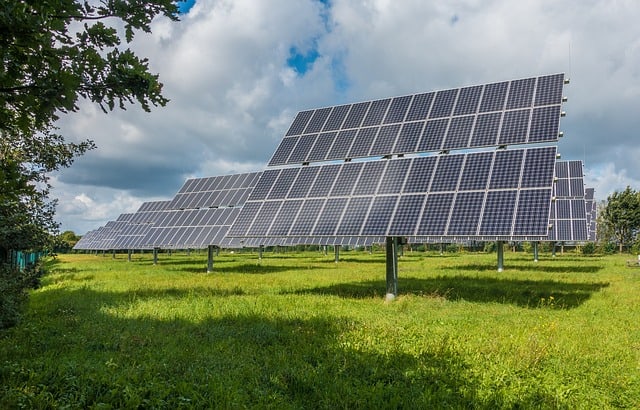Did you know that different kinds of solar panels are used in Australia? In this post, we’ll take a look at the three most common kinds of solar panels: monocrystalline, polycrystalline, and thin film. We’ll also discuss some of the benefits and drawbacks of each type. By the end of this post, you’ll have a good understanding of which kind of solar panel is ideal for your home. If you’re looking for a solar company in Australia, it’s prudent to ask what solar panels they install, as every panel has unique features.
Before we get started, let’s get some basic information on the main components of a solar system.
Solar System Components
A solar system is made up of three main parts:
The solar panels. These panels collect the sun’s energy and convert it to electricity.
The inverter. This converts the direct current (DC) that the solar panels produce into the alternating current (AC) that your home needs.
The battery. The battery stores the energy produced by the solar panels so that you can use it at night or during a power outage. Now that you know the basics, let’s look at the three types of photovoltaic panels.
Types Of Photovoltaic Panels
There are three types of photovoltaic panels typically used for solar power systems in Australia: Monocrystalline, Polycrystalline, and Thin-Film. Understanding the differences between monocrystalline, polycrystalline, and thin films is important if you want to get the most out of your solar
Panels Made Of Monocrystalline Silicon
The monocrystalline photovoltaic panels are made from a single unit of silicon. These panels are also known as single-crystalline cells, and they are the most efficient solar panel. The colour of the monocrystalline solar panel’s back sheet is usually black.
Advantages of monocrystalline panels:
Highest efficiency – monocrystalline photovoltaic panels have a conversion efficiency of around 20%, which means converting 20% of the sunlight that hits them to electricity.
Despite monocrystalline photovoltaic panels being the most costly solar panels, they have a longer lifespan than other panels.
Polycrystalline Panels
Multiple silicon crystal cells are combined to make Polycrystalline panels. These panels are also known as multi-crystalline cells, and they have a conversion efficiency of around 16%.
Due to their lower heat tolerance, Polycrystalline panels are less efficient than monocrystalline panels. However, they are cheaper to manufacture and shorter than monocrystalline panels.
Thin-Film Panels
Thin-Film photovoltaic panels are made from a thin layer of silicon. These panels are also known as amorphous silicon cells, and they have a conversion efficiency of around 10%. The colour of thin-Film photovoltaic panels is also black, which can be a drawback if you’re looking for a panel that will blend in with your roof.
Thin-Film photovoltaic panels are the cheapest solar panel to manufacture and the least efficient. They also have a shorter lifespan compared to other solar panels.
Due to their low efficiency, thin-Film photovoltaic panels are ideal for ample space setup. For instance, you can use them for agricultural and commercial applications with ample roof space available.
The most common type of solar panel in Australia is Monocrystalline, followed by Polycrystalline, then Thin Film.
Types Of Solar Power Systems
It would be best to decide which solar-powered system suits you since you now know the difference.
Grid-Connected Solar System
Grid-connected solar systems are the most common kind of solar system. These systems are linked to the electricity grid, and they use the grid as a backup in the case of a power outage.
Grid-connected solar systems are the most accessible type to install. They enable you to export excess energy to the grid or import energy when your solar panels don’t produce enough power.
Grid-connected solar systems are ideal for homeowners that want to reduce their electricity bills.
Off-Grid Solar System
Off-grid solar systems are not connected to the electricity grid. These systems use batteries to store energy, and they are typically used in remote areas where there is no access to the grid.
Off-grid solar systems are more expensive to install than grid-connected solar systems, but they have the advantage of being independent of the grid. This means that you won’t have to worry about outages or price fluctuations.
Hybrid Solar System
Hybrid solar systems are a combination of grid-connected and off-grid solar systems. These systems use batteries to store energy, and they are connected to the grid for backup.
Hybrid solar systems are ideal for homeowners who want the benefits of both grid-connected and off-grid solar systems. They are more expensive to install than grid-connected solar systems, but they have the advantage of being more versatile.
Now that you know the different kinds of solar panels and solar power systems, you can choose the right one for your needs.
There are a variety of solar panels available so that you can choose the right one for your needs. Though monocrystalline solar panels are the most efficient, they can be expensive. Grid-connected solar systems are the most common type and ideal for homeowners who want to reduce their electricity bills. Off-grid solar systems are not connected to the grid, and they use batteries to store energy. They are more expensive to install than grid-connected solar systems, but they have the advantage of being independent of the grid. If you’re looking for a solar system that is versatile and affordable, then a hybrid solar system may be right for you.































